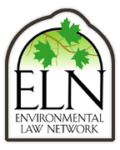
January 20, 2021
Will Hitchcock
MGKF Newsflash
EPA’s Method 204 is a procedure designed to determine whether an enclosure surrounding a process is capable of capturing 100 percent of the process emissions, so that they may be wholly directed to a stack or emissions control device. Emissions that are not directly vented through a stack or control device are generally known as fugitive emissions, which can be difficult to quantify and have historically received little scrutiny during permitting if they occur inside a building. However, in Pennsylvania, New Jersey, and other states, we are increasingly seeing the Method 204 requirements being incorporated into air permits and other environmental permits as a means of ensuring that process emissions are directed through designated stacks or openings, rather than escaping as fugitive emissions.
Method 204 was initially designed for processes that emit Volatile Organic Compounds (VOCs) and are surrounded by an enclosure. The enclosure may be a building, a room within a building, or even a temporary enclosure installed for the purpose of quantifying the uncaptured emissions from the process. The method consists of a series of measurements and calculations which are then compared to a set of pass/fail criteria. If the Method criteria are met, then the process enclosure is assumed to capture 100 percent of the process emissions. The measurements include the spatial dimensions of the enclosure, the volumetric flows handled by the associated ventilation systems, and the dimensions and number of any openings in the enclosure (such as doors, windows, and intake louvers) as well as their distance from emission points in the process.
When relied upon by states and EPA as a way to address fugitive emissions in air and waste processing permits, Method 204 criteria may be incorporated directly as permit conditions or permit approval may be conditioned upon a successful Method 204 demonstration, similar to a stack test or control device performance evaluation. Although the method was designed to evaluate the capture of VOCs from process with active emission points, we have also seen the method applied to processes without defined emissions points such as processing activities within warehouses or other enclosures, as well as processes with particulate matter emissions which would have markedly different dispersion characteristics than VOCs.
For these reasons, it is critical for permittees to understand the definitions, procedures, assumptions, and limitations of Method 204 before using it as a method of complying with permit conditions or other emissions standards. Careful review and negotiation of draft permit conditions is key to ensuring that the application of Method 204 is relevant and appropriate to the process being permitted. Partnering with engineering and stack testing firms to design and execute protocols for successful Method 204 demonstrations is also important. If you are interested in learning more or have questions relating to the use of Method 204 to meet permit requirements governing the capture of fugitive emissions, our attorneys and technical consultants are ready to help.
